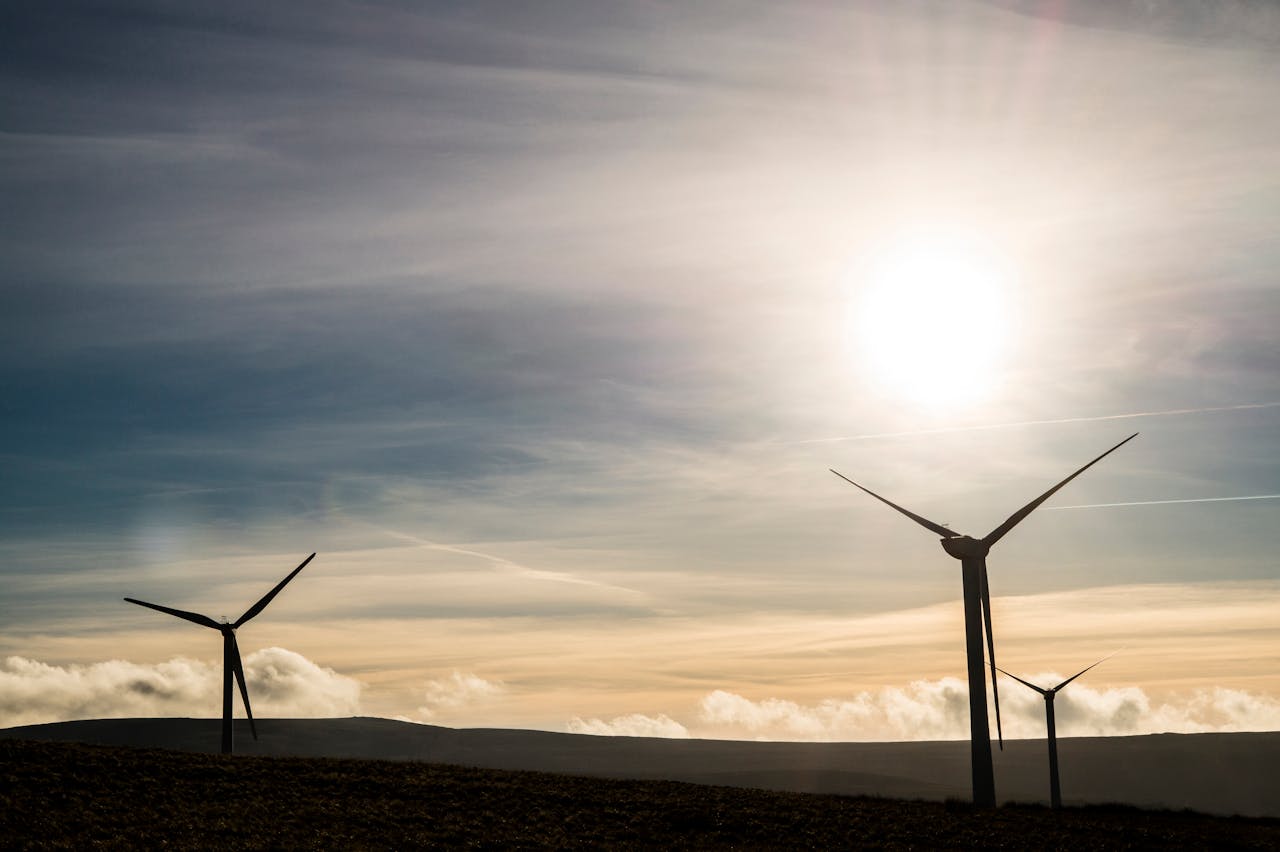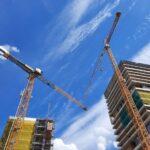Every new federal building must be designed to meet the energy efficiency standards set forth in either 10 CFR 433 (New Federal Commercial and Multi-Family High-Rise Residential Buildings) or 10 CFR 435 (New Federal Low-Rise, less than three stories, Residential Buildings). This update aims to support performance requirements and speed up the need for less fossil fuels in new construction and major renovations. This blog provides a quick overview of the changes and next steps.
Surety Bond Professionals is a family-owned and operated bonding agency with over 75 years of experience. With access to a broad range of surety markets, our expert agents are ready to assist with all of your construction bond needs.
Statutory Background
Per Section 305 of the Energy Conservation and Production Act (ECPA), as amended, the U.S. Department of Energy (DOE) is required to determine whether energy efficiency standards for new federal buildings should be updated to reflect revisions to voluntary industry standards (ASHRAE 90.1 for commercial and multi-family high-rise residential buildings, and the International Energy Conservation Code (IECC) for low-rise residential buildings). The final rule, adopted in late 2023/early 2024, set the new fossil-fuel standards and also adopted ASHRAE Standard 90.1–2019 and the 2021 IECC as the base energy standards.
Section 305 of ECPA additionally requires that federal buildings be designed to achieve energy consumption levels that are at least 30% beyond the codified federal standards, where life cycle cost-effective.
These requirements are detailed in 10 CFR 433 (Commercial Rule) and 10 CFR 435 (Residential Rule). Further, Section 109 of the Energy Policy Act of 2005, 42 USC 6834, directed DOE to establish revised federal building energy efficiency performance standards.
What Exactly is The “Federal Clean Energy Rule”?
The rule amends 10 CFR Parts 433 and 435, setting maximum allowable Scope 1, on-site fossil-fuel-generated energy for new federal buildings and certain major renovations. The standards scale by building type and climate zone for designs that begin in FY 2024 and FY 2025–2029; then, for designs beginning FY 2030 or later, the allowable on-site fossil fuel use is zero. There’s also a process for agencies to petition for a downward adjustment if meeting the standard is technically impracticable.
What Changed in 2025 and Why Should You Care?
In May 2025, the Department of Energy (DOE) stayed the May 1, 2025, compliance date for its Clean Energy rule to May 1, 2026, while it reviews implementation guidance.
Practically, projects whose design starts before May 1, 2026, do not trigger the new Subpart B fossil-fuel limits (designs that start on or after that date will). The end state hasn’t changed though: applicable federal projects that begin design in FY 2030 or later must achieve zero on-site fossil-fuel energy.
Project owners and contractors should treat this as more breathing room.
Who Does The Federal Clean Energy Rule Apply To, And Who’s Out Of Scope?
DOE clarifies that the fossil-fuel-reduction standards apply to “EISA-subject” federal projects, which, in practice, include public buildings that either require a GSA prospectus submission or meet a cost threshold (indexed annually). Leased properties are covered for major renovations only if the building was originally built for federal use. If an existing building isn’t undergoing a qualifying renovation, the rule doesn’t apply.
What Design Choices Does This Push To The Front Of The Line?
The rule doesn’t prescribe specific equipment, but the physics of Scope-1 emissions do. Teams should expect:
- high-efficiency electric heat pumps for space and water heating;
- attention to envelope performance to keep electric loads manageable;
- induction or other electric cooking strategies in food service;
- and early, proactive coordination with utility capacity and service upgrades. (For more on the surging opportunities in this sector, read our post on Grid Infrastructure Soars in 2025).
How Do You Determine Your On-Site Fossil Fuel Allowance?
To accurately determine the maximum allowable on-site fossil fuel energy for your project, it’s best to consult the definitive regulatory source. The rule sets a maximum cap on Scope 1 energy (which is energy generated by combustion on-site, like natural gas, propane, fuel oil, etc.) expressed in kBtu/yr-ft2 (thousands of British Thermal Units per square foot per year).
Where to Find Your Cap
The specific maximum allowable caps are detailed within 10 CFR Part 433 and 435 (Subpart B). You must look up the value based on two factors:
- Building Type: The rules include specific caps for dozens of federal building types (e.g., Office, Laboratory, Data Center, Warehouse).
- Climate Zone: The cap is highly dependent on your project’s geographic location, which must be identified using the ASHRAE 169 climate zone map (Zones 0A–8).
How to Calculate Your Allowance
Once you find the correct cap value (the kBtu/yr-ft2 number) for your specific building type and climate zone, you calculate the project’s total allowable energy use annually using this simple formula:
Allowed On-Site Fossil Energy (kBtu/yr)=Cap Value (kBtu/yr-ft²)×Conditioned Floor Area (ft²)
Example: If your 100,000 ft2 building is in a warm climate with a cap value of 2 kBtu/yr-ft2, your total allowance is 200,000 kBtu/yr. If the cap is 0 kBtu/yr-ft2, the design must be all-electric.
Remember, even with a fossil fuel cap, your project must still meet the base energy efficiency code (ASHRAE 90.1–2019 or the 2021 IECC).
Does This Change How Teams Bid, Schedule, And Buy?
Absolutely. The added year can help de-risk procurement (think switchgear, transformers, and heat-pump equipment), subcontractor training for electrified systems, and commissioning plans that validate performance.
It’s also a window to refresh division-level specs and master details to reflect all-electric baselines, update cost models to compare heat-pump variants, and get owner approval on electrification-first alternates.
If you build federal work in colder climates, budget time for climate-appropriate heat-pump selection and defrost strategies, and lock in measurement and verification scopes early.
How Should Contractors And Owners Prepare This Year?
Treat 2025–2026 as a preseason for an all-electric regular season:
- Audit your pipeline of federal pursuits for likely applicability under Parts 433/435.
- Standardize an all-electric baseline (space/water heating, cooking, backup strategies) and a “limited combustion” contingency with modeled compliance.
- Briefly estimate and precon teams on the rule’s timelines and the caps for your common building types.
- Prequalify suppliers of cold-climate heat pumps, electric commercial kitchen gear, and advanced controls, plus ECx providers who can prove performance at turnover.
- Coordinate early with utilities on service upgrades and timelines.
What Are The Bonding and Surety Considerations for the Clean Energy Rule?
The transition to all-electric design mandated by the Federal Clean Energy Rule introduces several new risks and complexities that directly impact surety bonding and a contractor’s capacity. Contractors should actively communicate their mitigation strategies for these risks to their surety bond professionals to maintain and maximize their bonding capacity.
- Increased Bid Risk (Bid Bonds): The complexity of accurately costing new electrified systems, specialized equipment, and utility upgrades increases the volatility of initial cost estimates. If a contractor wins a contract with an inaccurate estimate, they may be unable or unwilling to proceed, triggering a bid bond claim.
- Performance and Completion Risk (Performance Bonds): Failure to properly install or validate the performance of new, sophisticated electrified systems (like cold-climate heat pumps or advanced controls) increases the risk of project failure, warranty claims, and re-work. These technical risks elevate the surety’s exposure under the performance bond, which guarantees the project will be completed according to the contract’s terms and specifications.
- Procurement and Payment Risk (Payment Bonds): The shift to specialized equipment relies on a potentially strained supply chain. Delays in securing high-efficiency equipment can disrupt subcontractor schedules and payments. Furthermore, cost overruns due to supply chain volatility or design changes can strain a contractor’s finances, increasing the risk of default on obligations to suppliers and subcontractors, triggering a claim against the payment bond.
- Capacity Strain: Inaccurate cost estimation, technical hurdles, and prolonged schedules all stress a contractor’s working capital. A surety reviews these risks to determine a contractor’s overall bonding capacity, which can be restricted if the new risks are not properly managed.
Call Us Today
Our surety bond professionals will help you grow your revenue by maximizing your surety capacity. Call us today!
Frequently Asked Questions
Does the 2025 stay mean I can keep installing gas boilers on federal projects?
Only for projects whose design starts before May 1, 2026 (the stayed compliance date). After the stay lifts, designs in FY 2025–2029 must meet the fossil-fuel caps, and designs beginning FY 2030+ must be zero on-site fossil. Plan your baselines accordingly.
What counts as a “major renovation”?
The rule applies when the scope meets the definition of a major renovation of all (or specific) Scope-1 fossil-fuel-using systems. So if your renovation touches those systems, expect the standard to apply. Details live in 10 CFR 433, subpart B.
Are leased buildings covered?
For major renovations, yes. But only if the building was originally built for federal use, even if it’s now leased. New construction for federal use is covered; routine leased-space TI work that doesn’t meet the definition of a major renovation of Scope-1 systems typically is not.
Can an agency get relief if compliance is technically impracticable?
Yes. The rule includes a downward-adjustment petition process with DOE intended for specific cases where an agency demonstrates the standard cannot be met, given functional needs. It’s not a blanket exemption, and it requires documented justification.





